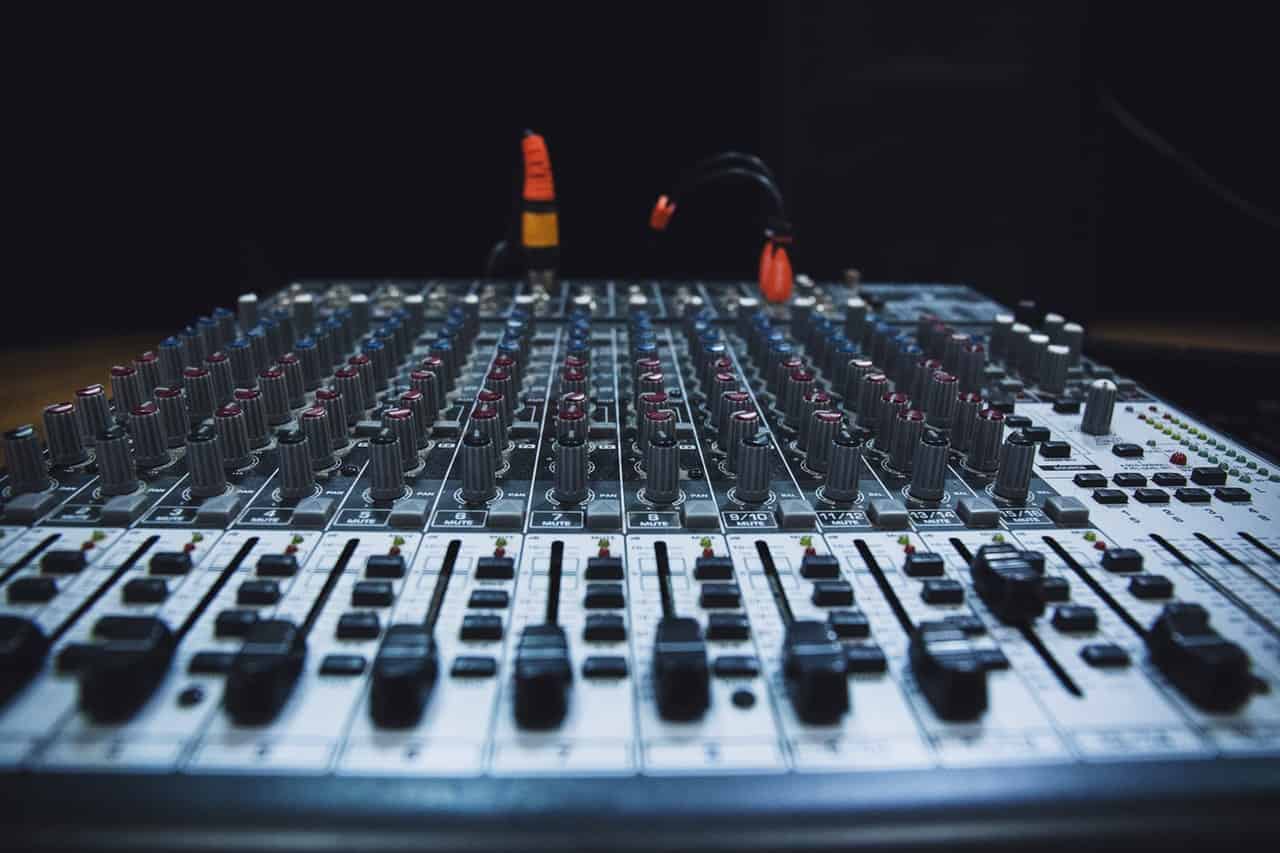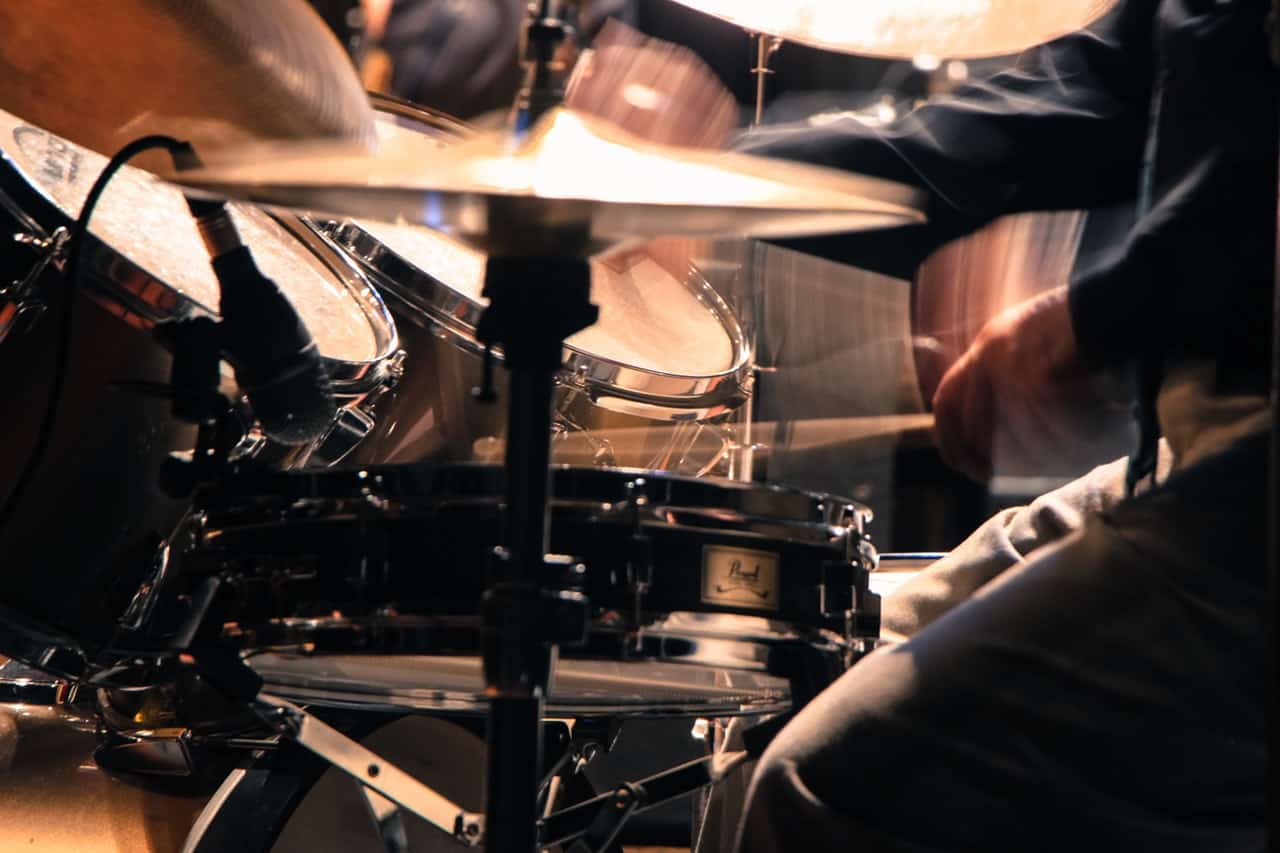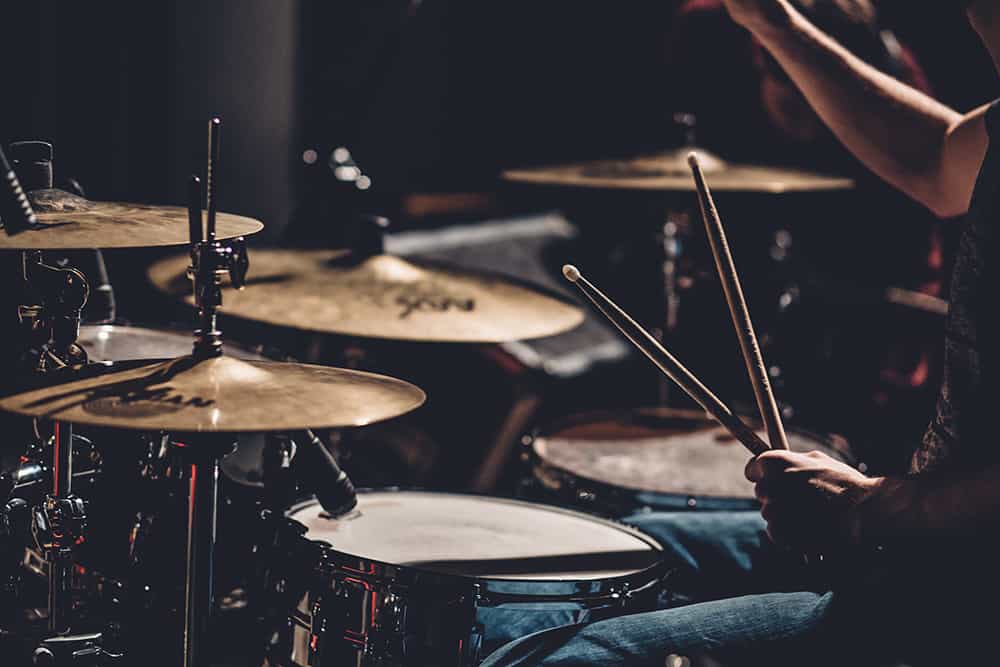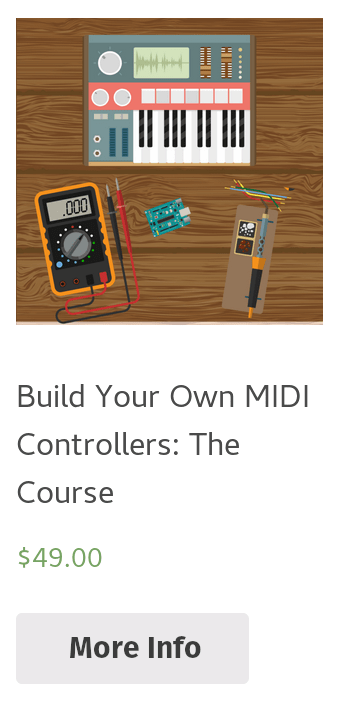Drum Programming Made Easy: Creating Realistic and Synthetic Beats
As with any new endeavor, figuring out where to start is often half the battle. This article is for those who are interested in programming drums, but don’t know where to start, or what tools they need.
While we are not diving head first into the deep end of the drum programming pool, there is a lot of information here.
This guide shows the acoustic drummer how they can successfully make the jump into the electronic world. It shows those that have never made a beat in their lives, digital or not, how to put together a killer beat that sounds great to both drummers and non-drummers alike.
Most importantly, it will tell you why your beats are falling flat and how to easily fix them.
Here Is What You Will Learn From This Article:
- The absolute basics of drum programming, regardless of the genre.
- The tools you’ll need to get started.
- How to quickly and easily create and produce professional sounding beats.
- How to create both realistic and synthetic sounding drums.
- Common mistakes beginners should watch out for.
- How to think and play like a drummer.
But first a little history . . .
What is Drum Programming?
The first drum machine, the Wurlitzer Side Man walked out on the scene almost 60 years ago in 1959.
There are some that will argue that the Chamberlin Rhyhmate was the first, which predates the Side Man by a few years, but it used tape loops instead of the Side Man’s electronically produced drum sounds.
The birth of drum machines opened up the music world and paved the way for drum programming to enter into studios big and small.
Skip to present day and one doesn’t even need a drum machine anymore to create beats and patterns that can span from drums so frighteningly realistic that acoustic players lose sleep over them to hyper-synthetic acid-inducing percussive mayhem.
Programming drums can mean a lot of things to different people.
Some will think it’s using a VST and creating realistic, natural sounding drums that blend in perfectly with other acoustic instruments.
Then there is the electronic world that drum machines gave birth to, where drums can sound as synthetic and robotic as they want.
Here you get programming that heavily uses samples, non-traditional sounds, and instruments, to create everything from remixes to cinematic soundscapes.
Where to Find Samples, Beats, and Plugins
Before you can program drums you need equipment. Different styles of drum programming will mean different tools, so let’s take a look at some.
Finding Samples
Samples are big in genres that fall under the EDM label like house, dubstep, and trace.
You’ll come across both free and paid samples, and I always recommend trying out a trial before buying it.
When looking for samples, Loopmasters is, without a doubt, the best place to find thousands and thousands of royalty-free samples both paid and free, and they are probably the best place to look first.
Here are some of our favorites from them.
EDM Samples
Melodic Dubstep and Beyond (Dubstep)
Dab Step (Dubstep)
Future Bounce (House)
Trance Elevation Vol 5 (Trance)
Drum VSTs
Plugins are a favorite for those that want more control over their drums. While they are big in EDM genres, their reach extends far beyond that label and find homes in just about any style of music because of how realistic and natural they can sound.
These are just scratching the surface of the VST world and you’ll definitely want to check out these links on drum machines, kits, and samplers, that cover not only the ones from above but a bunch of other cool VSTs.
Spicing Up Weak Beats

Sometimes you accidentally buy a sample pack or plugin and it turns out to not be as great as you hoped, but all is not lost!
You can do a lot with sounds that are just ok and often it’s best to go with these, rather than spending countless hours searching for that magical perfect sound.
EQ can do wonders!
Let’s say you find an almost perfect snare but it has a bit of a high hiss. That’s fine because you can just cut the frequency where the hiss is coming from.
Or if you have a flat sound add a touch of distortion to bring out the high-end.
It’s a much better idea to spend your time doing this instead of trying to find that “perfect” sound.
Drum Programming Basics

Becoming a Drummer
Before you start programming drums the first thing you need to do is start thinking and acting like a drummer.
It only makes sense to create drum parts that actual human drummers can play. A bad simple beat is way less detrimental to a song when compared to a jarring complex beat which is way more likely to take someone out of the song.
Now for the most important piece of information!
The one thing you should take away from this article . . . you’re not perfect!
But that’s what makes you human.
For creating realistic and natural sounding drums, you need to remember that humans aren’t perfect and we are used to the sound that imperfection creates.
Nothing gives away programmed drums faster than all the notes playing right on the beat every time and at the same volume.
Creating a Pattern
You want to create your pattern by starting with just one percussive sound and using it to create the skeleton of the pattern.
Starting with the kick is your best bet because it’s the core of most patterns. But starting with a snare or hi-hat is perfectly fine as well.
Doing this will slowly develop your beat, allowing you to focus on one percussive sound at a time and make sure it’s working in the pattern before moving on.
Creating a beat linearly with multiple rotating parts is a quick way to overwhelm yourself and create a messy beat that needs a lot of work.
Tempo
A lot of people stress over their starting tempo when really it’s not really that big of a deal.
Blasphemous, right?
Yes, some genres operate around certain tempos,adhering to them is fine and gives you a great starting point.
But when developing a natural-sounding drum pattern, you should be paying more attention to natural tempo fluctuations all drummers do.
Often when jumping to a new section we see drummers slightly slow down or speed up the tempo, and usually it’s within 10 bpm.
Another interesting tempo aspect you should watch for and apply to your drums is to gradually increase the tempo of the song throughout. White Stripes “Seven Nation Army” and The Rolling Stones “Gimme Shelter” are classic examples of this.
Velocity
There is nothing that will make your drums sound more robotic and flat than all the notes playing at the same velocity.
Velocity is basically how hard a drummer hits a note. Whether it’s intentional or not drummers rarely hit their notes at the exact same velocity.
You’ll want to think like a drummer again and listen to where and when you need to add emphasis to notes.
Often, the quickest thing that gives away programmed drums is on rolls and here you’ll want to make small adjustments to each note’s velocity in the roll.
Creating a Groove
There are a couple of definitions when it comes to groove.
When some talk about groove, they are talking about the combination of velocity and timing of the drums. This is a perfectly fine description, because drums create a groove within themselves.
But I want to focus on how groove is the sum of all the instruments that make up a song.
For example, a groove could be the relationship between the vocal and drum rhythms in a song.
A drum and vocal groove where both often add emphasis to the same beat will create a radically different clashing feel than vocals emphasizing beats where the drums lay back.
When creating drums for a song, you’ll, of course, want to heavily pay attention to how they fit with the vocals, because that’s where many listeners direct their attention.
But you equally, if not more so, need to pay attention to the bass and lock in with it.
While the average listener’s attention on the drum and bass groove is less direct, it’s the marriage of these two that engenders us to move our bodies.
Auto-Quantize
When programming drums in a DAW you will want to pay extra attention to auto-quantizing. Whether you use auto-quantize is completely up to you, and the genre you’re playing in with be a big deciding factor as well.
Quantizing sets all your notes to a grid and places every note on the beat. If you’re aiming for a tight drum style, then quantizing is great and creates a pattern that needs a lot less cleaning up.
If you’re going for a more laid-back playing style then you’ll probably want to stay away from auto-quantizing as it may make your pattern too rigid and stiff.
Most DAWs let you set the degree of how much quantizing you want on your track. Usually, it’s on a scale of 1-100, and you’ll want to mess around a bit and see how high you can get the resolution up to before it negatively affects your playing.
Learning to work with it will save you so much time and create a lot less stress in production.
How to Balance Simplicity and Complexity
Programming drums is a constant balance between simplicity and complexity.
It’s really easy to get carried away and create impossible to play parts, but when you’re new to programming drums you need to stick to simple patterns.
Yes, acoustic drummers, this applies to you as well!
You want to keep the complexity for down the road when you start messing with velocity, tempo, effects, layers, you get the point.
If you’re working with an abundance of notes, you’re going to be spending countless hours tinkering away, only to come out with a flat drum pattern that, despite being complex, is boring and unrealistic.
You will become so much stronger at programming drums if you focus your attention on making sure each note in your pattern sounds great.
This, as opposed to having multiple rotating parts that sound cool technically, but are a mess sonically.
Our 5 Best Tips

Listen to Your Favorite Drummers
This is important especially if you’re not a drummer. Listen for the elements we talked about above.
Can you find where the drummer is placing emphasis? Are they lagging on the beat, and can you figure out how they developed and created that pattern?
To hear a wide range of drummer's, you might enjoy this article from 93XRT on the best drum solos of all time.
You can also gain a lot of inspiration from Hip-Hop beats. LA Weekly put together a pretty nice list of the 20 best Hip-Hop producers.
Play and Record Parts in Real Time
It’s a lot easier to create natural sounding drums when you record them in real time and play them on MIDI controllers like keys, pads, or v-drums.
This will bring back the natural human element, and make the flow and velocity of the notes a lot more natural sounding.
This creates a lot less work for you in production.
Even if you can’t play the full pattern you want to ultimately create, being able to simplify it and play the outline of the beat with a controller will set you up for greater success.
Mix Different Sounds Together to Create Texture
Let’s go back to our weak plugin tones from earlier.
Maybe your problem is the snare is sounding too thin and EQing it isn’t working. Try blending it with a different snare tone and see how that helps.
It’s all about learning how to create the tones you want instead of looking for them. That’s the mark of a great programmer, and layering and creating texture is crucial to creating that “perfect” tone.
Learn Basic Music Theory
Basic drum and music theory will help you go far. And if you’re new to drums, it’s one of the fastest ways to get you thinking like a drummer.
You should know things like how to create common patterns, like a backbeat (emphasizing on beats 2 and 4), how to count and manipulate time signatures, and how to break down a beat/pattern.
It’s a lot easier to create a drum pattern for a ballad when you know that most drummers play them ever so slightly behind the beat and often play light eighth-notes on the ride or hi-hat to help keep time - because the patterns are usually simplistic and set to a slow tempo.
All genres have basic characteristics like these and learning them provides you with a shortcut to developing stronger beats faster.
Acoustic drummers, use learning to program drums as an opportunity to brush up on the fundamentals.
Final Notes
You Don’t Have to be a Drummer to Program Drums
When it comes to programming drums, you don’t actually have be able to play drums.
You just need to know how to create them.
Spend some time looking at drum patterns, remember that you only have two hands and two feet, and if you can, get yourself behind a drum kit.
You don’t need to be able to play it, just take some time and see how you sit, where your hands and feet fall, etc.
Think about some of your patterns when you’re doing this. Do they still feel natural to play? Hit the snare a few times and hear how the velocity changes.
Nothing will get you thinking like a drummer faster than when you’re behind an actual kit.
Enjoy this article? Make sure to give it a share on social media to show your support!

Leave a Comment
2 comments
I think the advice to start “thinking” like a drummer is great. If you’re able to watch the drummers of your favorite bands, or at a live show, it’ll help bring a different perspective to programming your own music.
Glad you like that one!